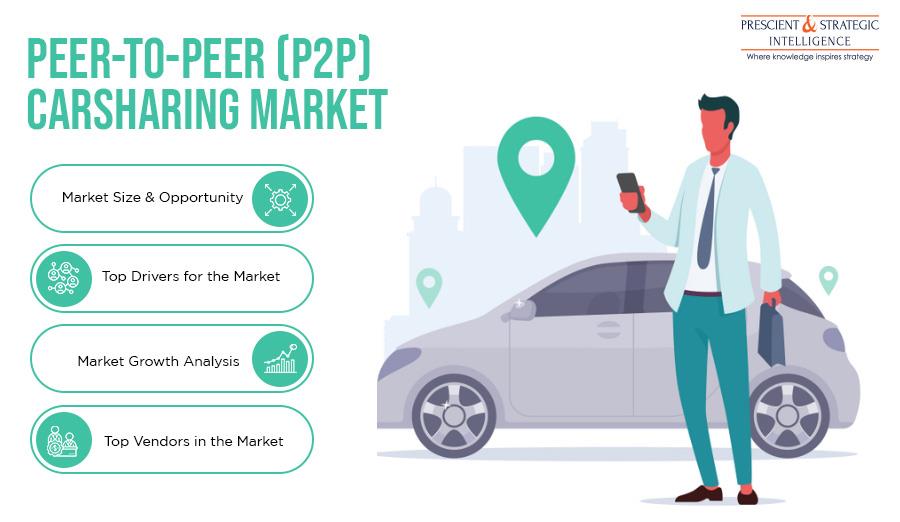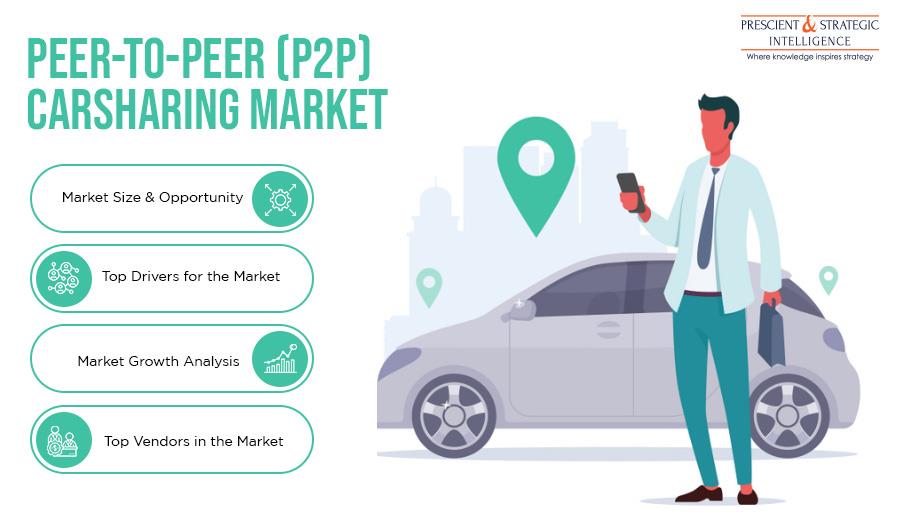
Sharp Surge Expected in Asia-Pacific Peer-to-Peer Carsharing Market in Future

The Asia-Pacific (APAC) region is expected to grow the fastest over the forecast period in the peer-to-peer carsharing market. China and India have prioritized the adoption of innovative mobility services and electric automobiles.
The global peer-to-peer carsharing market generated a revenue of $1,015.7 million in 2020, and it is predicted to register a CAGR of 21.7% from 2020 to 2030 (forecast period). According to the forecast of the market research organization, P&S Intelligence, the market will reach a value of $7,225.2 million by 2030. The major factors fueling the surge in the market are the increasing concerns being raised over the rising greenhouse gas emissions, rapid vehicle electrification, soaring use of carsharing services in emerging economies, increasing urban road congestion, and the low cost and high convenience of these mobility services.
With the deterioration of the air quality levels, on account of the increasing emission of toxic gases from vehicles, the governments of many countries are taking initiatives for encouraging the adoption of eco-friendly mobility solutions, such as carsharing services. These services are highly effective in reducing air pollution, as their mushrooming deployment would lead to a sharp reduction in the number of private vehicles running on roads, thereby causing a sharp fall in carbon dioxide (CO2) emissions.
Get the sample pages of this report at:
Additionally, many countries are increasingly focusing on raising public awareness about sustainable transportation systems. Moreover, many countries have already started promoting the deployment of zero- and low-emission transportation systems. To achieve an emission-free ecosystem, the governments of many countries are enacting strict emission control policies and encouraging the adoption of electric motors in the vehicles used for carsharing services. Moreover, the increasing adoption of electric vehicles, especially in the Asia-Pacific (APAC) region, is creating lucrative growth opportunities for the players operating in the peer-to-peer carsharing market.
Depending on car type, the market is classified into executive, luxury, and economy categories. Out of these, the executive category dominated the market in 2020. The category is also predicted to expand massively in the peer-to-peer carsharing market in the coming years, owing to the lower fare for rides on these vehicles considering the quality and comfort that they provide in comparison to the economy and luxury cars. Geographically, the APAC region is predicted to be the fastest growing region in the market throughout the forecast period.
Browse detailed report on Global Peer-to-Peer Carsharing Market Size and Growth Forecast to 2030
This is attributed to the rapid deployment of electric automobiles and innovative mobility services in regional countries, such as India and China. Additionally, in order to mitigate the surging pollution levels, the adoption of electric vehicles in carsharing services in China is soaring. Moreover, the peer-to-peer carsharing market is predicted to exhibit huge expansion in the country in the forthcoming years, primarily because of the sustained government backing being provided in the form of various incentives and laws.
Hence, it is quite clear that the market will register rapid advancement in the years to come, mainly because of the growing popularity of peer-to-peer carsharing services, owing to their ability to provide greater convenience and comfort than private vehicles, the rising requirement for greener mobility solutions, surging road congestion, especially in urban areas, and the mushrooming deployment of electric vehicles in peer-to-peer carsharing services across the world.
Market Size Breakdown by Segments
By Car Type
- Economy
- Executive
- Luxury
By Region
- North America
- U.S.
- Canada
- Europe
- Germany
- France
- U.K.
- The Netherlands
- Asia-Pacific
- Australia
- Latin America
- Middle East, and Africa
Browse Other Related Reports
Carsharing Market – Asia-Pacific is currently the largest carsharing market, majorly on account of the strong government support for such a transportation system, especially in China. In this country, the number of electric cars in shared mobility fleets has drastically risen in the last few years.
Micromobility Market – APAC is the most significant region for the micromobility market, as its vast middle-class population wants nothing more than a cost-effective commute. Moreover, India, China, and other regional countries are highly polluted, which is why the idea of shared mobility, particularly e-mobility, is being strongly promoted by governments and private companies.

Legal Disclaimer:
MENAFN provides the information “as is” without warranty of any kind. We do not accept any responsibility or liability for the accuracy, content, images, videos, licenses, completeness, legality, or reliability of the information contained in this article. If you have any complaints or copyright issues related to this article, kindly contact the provider above.






















Comments
No comment